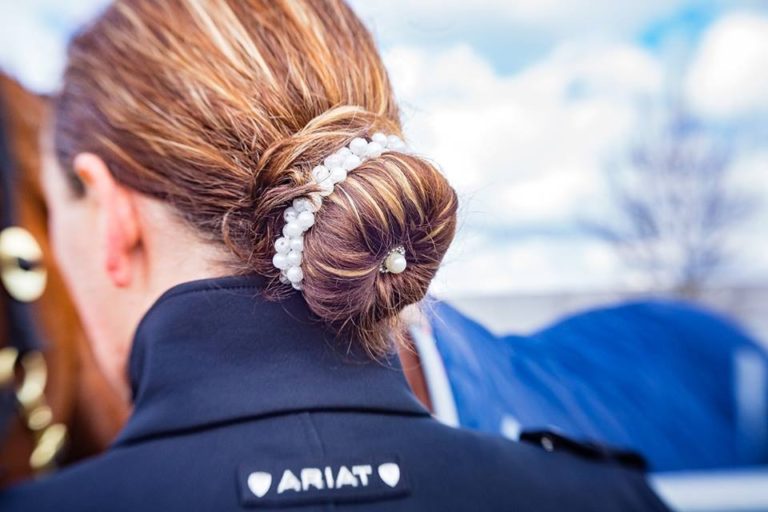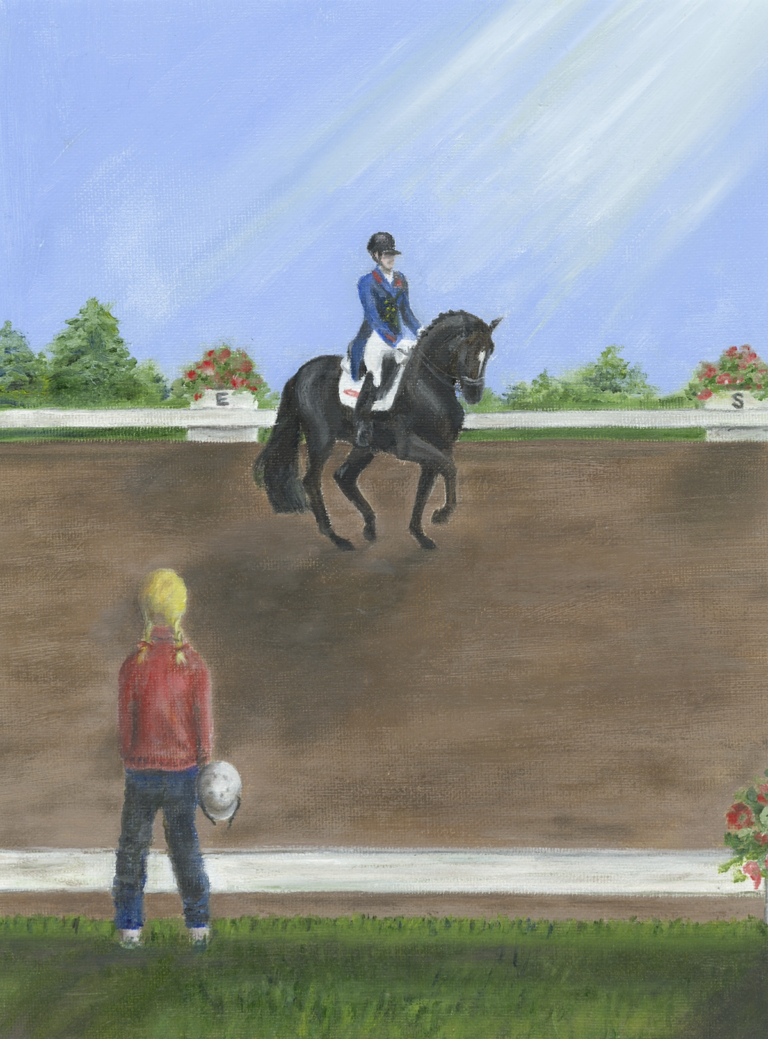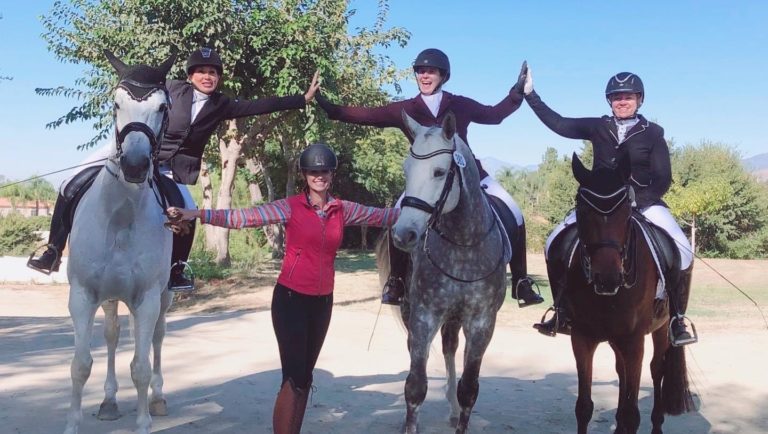This month we take a look at how to achieve a soft, independent hand while still remaining in control of the upper body.
First, it is necessary to understand that your shoulder joints belong to the horse. They must remain moveable and elastic as this is at the root of having a soft hand, which requires much more than just having softness in your wrist or elbow. Your shoulder joints are also very shallow, which means that they are not very strong. Many riders try to create steady contact with the horse by restricting these joints too much. This will create an effect that is opposite of the ideal: Your hands will be moving relative to your body rather than moving with the horse. Conversely, shoulder joints that are flexible will allow your arms to move softly along with your horse’s movement.
Often we feel that if we soften our arms, the horse will pull the reins out of our hands. How can you have a soft hand if the horse keeps pulling as soon as you soften it? The answer comes from not only training the horse to carry himself correctly and in good balance, but as riders, we must also have good shoulder-girdle stability.
To help stabilize your shoulder blades, the lower fibers of the trapezius, the serratus anterior and the rhomboids should all be working in conjunction. Also of interest to riders is the latissimus dorsi: the big, triangular muscle that runs from the back of the upper arm right across the side of the back into the lower vertebrae and sacrum. This is the muscle that is going to help stabilize your upper arm, keeping it close to your side and making sure that any flapping elbows remain well under control. Below are exercises that will help you bring awareness to and achieve shoulder-girdle stability.
Shoulder Stability in Prone
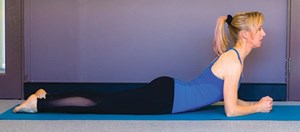
Setup:
• Find yourneutral spine while lying on your tummy and resting on your elbows and forearms so that your upper arm is perpendicular to the floor.
• Keep your hands in fists with knuckles together to form a triangle with your forearms. Switch off your outer global muscles and relax your legs.
• Switch on your core by imagining your low abdominals melting inward toward your spine and lifting up gently through your pelvic floor. When breathing, imagine filling up your lungs completely, including the sides and back, not just the front. Your shoulders should remain relaxed and still.
Instruction of Movement:
• Breathe in and pull yourself up over your forearms and hands, lifting up and out of your elbows and shoulders by sliding your shoulder blades down your back in a soft V.
• Elongate your body and float the top of your head up to the ceiling, keeping length through your torso so as not to overarch your back.
• Keep your pelvis on the ground.
• Relax back to the start position on an out breath.
Variation: As you pull yourself over your arms, gently stretch your neck by tipping your ear to your shoulder, one side then the other. Releasing your neck and the area across the top of your shoulders allows you to focus more on the lower muscles near your shoulder blades rather than the tops of your shoulders and neck.
Arm Floats
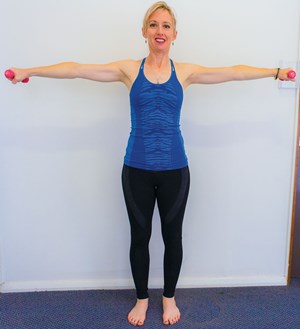
This exercise helps you disassociate your arms from your shoulder blades.
Setup:
• Find a neutral spine, standing with your feet parallel and hip-joint-width apart along with the knees.
• Switch off your outer muscles, relaxing your arms and neck. Let your arms hang loosely by your side. Switch on your core.
Instruction of Movement:
• On an in breath, allow your arms to float up to shoulder height, keeping your shoulders from creeping higher.
• Maintain a neutral spine.
• Breathe out and with control, lower your arms back to the start position. Take as much time lowering your arms as you did to raise them up. Don’t just drop them.
Variation: You can hold small weights. They don’t need to be heavy, just enough to help you connect your upper arm into the lats. It helps to do this in front of a mirror so you can keep an eye on your shoulders and make sure your arms move equally.
Dumb Waiter
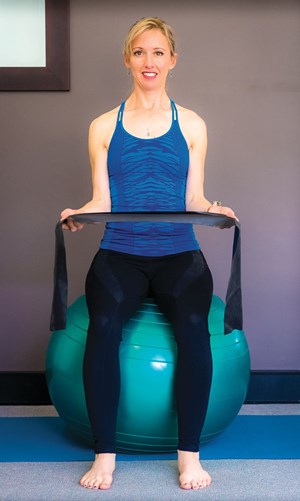
This exercise is helpful if you tend to hunch when riding. It opens your chest and brings awareness and strength to the back of your body between your shoulder blades. It also brings you more into a riding position. You can do it sitting or standing.
Setup:
• Begin with a body check to confirm you have an aligned spine and, if sitting, equal weight in your sit bones.
Instruction of Movement:
• Keeping your upper arm perpendicular to the ground and lower arm parallel to the ground, palms up, breathe in and separate your hands by focusing on the muscles between your shoulder blades.
• Breathe out to return to the start position. It is very important that the elbow remains gently by your side throughout the whole exercise.
Variation: You can do the same exercise with a Thera-Band or a set of small hand weights.
Tricep Pushup

This exercise builds on upper-body stability and brings evenness to the front and back of the torso when done correctly.
Setup:
• Start in a plank position with your hands directly under your shoulders, core switched on and your neck in alignment with the rest of your spine.
Instruction of Movement:
• On an in breath, bend your elbows backward, so your upper arm remains by your side as you roll your shoulders slightly forward and allow your body to go as low as possible while still maintaining a neutral spine, supporting your abs and a broad back.
• Breathe out and press your elbows straight as you return to the start position. It is imperative that you maintain a neutral spine.
Variation: If this movement is too strong for you, start on your knees rather than your feet. Another option is to place a Pilates Magic Circle under your sternum to support your body throughout the exercise.
Rebecca Ashton is a qualified Pilates instructor, a British Horse Society-trained instructor and an Equestrian Australia-accredited dressage coach. She has competed through Intermediaire II, working with riders such as Anky van Grunsven and earning championship titles in the small tour. She lives in Australia and teaches clinics internationally (equestelite.com).




